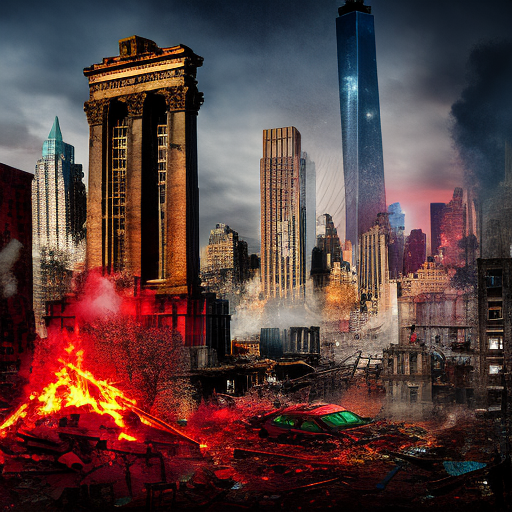The Bonfire of the Vanities: A Tale of Greed, Power, and Social Divide in 1980s New York City
In Tom Wolfe’s “The Bonfire of the Vanities,” the glitzy world of 1980s New York City serves as the backdrop for a gripping tale of greed, power, and social divide. Through the intertwining stories of Sherman McCoy, a wealthy bond trader, and a cast of colorful characters, Wolfe explores the dark underbelly of a city consumed by ambition and excess. As the lives of the rich and powerful collide with those on the fringes of society, the novel exposes the stark realities of class, race, and justice in America.
The Rise and Fall of Sherman McCoy
At the center of the story is Sherman McCoy, a successful Wall Street bond trader who epitomizes the excesses of the era. Living in luxury on Park Avenue with his beautiful wife and young daughter, Sherman is seemingly invincible. However, his life takes a dramatic turn when he and his mistress, Maria Ruskin, accidentally enter the Bronx and find themselves involved in a hit-and-run accident. Fearing the consequences of the incident, Sherman becomes entangled in a web of lies and deceit as he tries to protect his reputation and maintain his privileged position in society.
A City Divided: Class, Race, and Justice
Wolfe uses the collision between Sherman McCoy’s world and the gritty reality of the Bronx to explore the deep divisions within New York City. The novel delves into the stark contrast between the opulent lifestyles of the wealthy elite and the struggles of the working class and minority communities. As the media sensationalizes the hit-and-run case, racial tensions flare, and the city becomes a powder keg ready to explode. Wolfe’s portrayal of the justice system highlights the disparities between how the rich and poor are treated, exposing the corruption and manipulation that often go hand in hand with power and privilege.
The Pursuit of Ambition and the Cost of Excess
“The Bonfire of the Vanities” also delves into the destructive nature of ambition and the consequences of unchecked greed. Through the characters of Sherman McCoy, his lawyer Tommy Killian, and the ambitious prosecutor Larry Kramer, Wolfe explores the lengths people will go to protect their own interests and maintain their social standing. As the story unfolds, the characters’ lives unravel, and they are forced to confront the emptiness and moral bankruptcy that lie beneath their lavish lifestyles.
- Power and privilege can blind individuals to the realities and struggles of those less fortunate.
- Racial and class divisions can lead to explosive tensions within a society.
- The pursuit of wealth and success can come at a high personal and societal cost.
“The city, seen from the Queensboro Bridge, is always the city seen for the first time, in its first wild promise of all the mystery and the beauty in the world.”
In conclusion, “The Bonfire of the Vanities” is a scathing critique of 1980s New York City and the societal divisions that plagued the era. Through its vivid characters and gripping plot, the novel explores themes of greed, power, and the consequences of unchecked ambition. Wolfe’s sharp social commentary serves as a stark reminder of the dangers of a society driven by excess and the importance of empathy and understanding in bridging the gaps between different classes and races.












